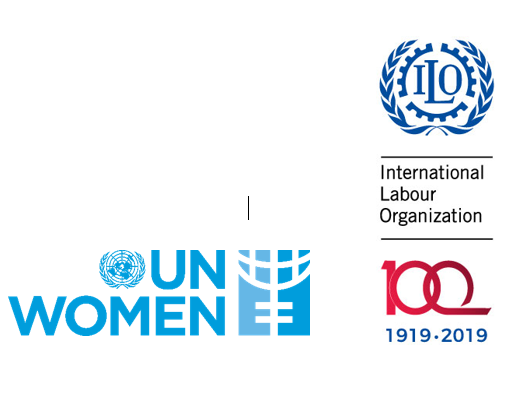Violence and harassment against women results from unequal gender roles and unequal power relations between men and women in society, including at home, at work, at school, and across institutions. These are rooted in, and reinforced by, social norms that perpetuate harmful attitudes, stereotypes, behaviours, and multiple (intersectional) forms of discrimination. For example, some men sexually harass women who enter senior-level positions or who occupy jobs that have been traditionally considered male, because they regard them as a threat to traditional gender power structures in the workplace (FRA, 2014).[1] For example, in a study of women working in typically male-dominated trades in the United States, nearly a third reported that they frequently, or always, experienced sexual harassment (Hegewisch and O’Farrell, 2014).
In many countries across the world, society fails to effectively condemn violence against women, which is reinforced by “…the ideology of men’s entitlement and privilege over women, social norms regarding masculinity, and the need to assert male control or power, enforce gender roles or prevent, discourage or punish what is considered to be unacceptable female behaviour” (CEDAW, 2017, para. 19).
A global poll carried out by Care International as part of their campaign #ThisIsNotWorking found that significant numbers of men believe that it is acceptable to sexually harass and abuse women at work (CARE, 2018). The poll - involving 9,408 adults (51 per cent men and 49 per cent women) in eight countries (Australia, Ecuador, Egypt, India, South Africa, the United States, the United Kingdom and Vietnam) - found that nearly a quarter of men surveyed believed that “it is sometimes or always acceptable for an employer to ask or expect an employee to have intimate interactions such as sex with them, a family member or a friend.” Thirty-nine per cent of Indian men surveyed said it was sometimes, or always, acceptable to wolf-whistle or cat-call at a colleague. In the United Kingdom, 36 per cent of 25-34 year-olds responded that “it is sometimes or always acceptable to pinch a colleague’s bottom in jest.” The study also indicates a “gender gap” in the perception of acceptability of sexual harassing behaviours. For instance, in the United States, “44 per cent of men aged 18-34 responded that it is sometimes or always acceptable to tell a sexual joke to a colleague at work, while only 22 per cent of women in that age group do.”
Unconscious bias negatively affects women’s autonomy and integrity at work and is closely connected to gender stereotypes in society, which can limit the development of women’s professional opportunities (ILO, 2017a). Gender stereotypes result from deeply-engrained attitudes, values, norms and prejudices against women that have the effect of maintaining men’s power over women. They include assumptions about women having less power in the family, in society, being subservient to men and taking the predominant role in carrying out unpaid household and care work. This results in a form of bias that can become ingrained in key economic and social institutions, such as workplaces, local governments and public service organizations. This can occur in subtle, systemic ways, underpinned by patriarchal organizational cultures, policies, processes and decision-making that perpetuate social norms. Such gender stereotypes – whether at the individual or institutional level - largely disadvantage women in the workplace, but they can also negatively affect men, for example, by discouraging them to work in professions considered “feminine” (UN Women, 2015b).
In addition, institutionalized sexism – in governments, companies, trade unions, city planning agencies, law enforcement bodies, amongst others – has the effect of perpetuating social norms and gender inequalities that tolerate violence and harassment against women at work. Challenging sexism in the world of work means that decision-makers take the responsibility to act upon gender inequalities and promote equality, through the implementation of gender equality policies and leading culture change in the workplace, and at a societal level through gender-responsive public services.
Ending violence and harassment against women is inextricably linked to achieving gender equality and to tackling related underlying causes and risk factors (ILO, 2017b, p. 98). In gender-balanced and female-dominated workplaces, sexual harassment tends to be lower (PEW Research Center, 2018). Gender-diverse, as well as ethnically and culturally diverse, companies “are better able to attract top talent; to improve their customer orientation, employee satisfaction, and decision making; and to secure their license to operate” (McKinsey & Company, 2015). In 2017, companies with more gender-diverse executive teams were reportedly “15 percent more likely to experience above-average profitability” (Hunt et al., undated).
[1] The survey found that that sexual harassment is commonly experienced by women with a university degree and by women in the highest occupational groups (75 per cent of surveyed women in the top management category and 74 per cent of those in the professional occupational category had experienced sexual harassment in their lifetime). See also: ILO (2016) Women at Work: Trends 2016. Geneva, ILO.
